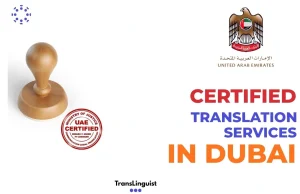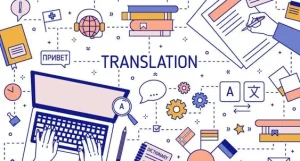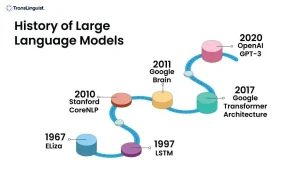Choosing the right international expansion strategy is as much about timing as tactics. When real demand appears outside your home market and your team can deliver without guesswork, your international expansion strategy stops being a slide and becomes an operating plan. This guide lays out five clear signals that your international expansion strategy is ready to move, backed by data points and practical checks you can run this quarter.
Market pull you can measure
What to track before you book flights
Look for steady demand from the same countries over several months. The cleanest signals are repeat orders to the same region, qualified distributor inquiries, support tickets in local currencies, and organic traffic that grows from specific locales without paid boosts. One viral post can create noise for a week. Durable pull shows up as returning buyers, referrals, and rising search queries in the same country.
Turn signals into a simple forecast
Split your pipeline and revenue by country. Track activation rate, second purchase rate, and ticket volume in those markets. If the early cohort abroad behaves like your domestic customers within ninety days, your value proposition is traveling. If they churn or keep asking for basics you do not yet support, you may be early. This step stops you from mistaking curiosity for product-market fit.
Economics that survive distance
Price, cost, and service modeled for reality
Test your margin with everything included. Add freight, duties, taxes, payment fees, currency conversion, and returns. Layer service level targets for warranties and response times. If your margin still stands and cash conversion remains healthy, the business can fund growth rather than relying on wishful thinking.
Capacity and cash that can stretch
Use your domestic win rate and cycle time as a baseline. Now add language coverage, time zone coverage, and supplier lead times. If the model shows you can serve the first one hundred customers per country without degrading quality at home, green lights begin to blink. If the model breaks under basic assumptions, fix the playbook before you launch.

An operating model you can actually replicate
People, process, and platform that travel
Write down how you market, sell, fulfill, and support. Then test whether those steps make sense under another legal system and a different culture. Systems that already handle multi-currency accounting, multi-warehouse inventory, and tax reporting will lower your risk. A lightweight playbook beats ad hoc improvisation when the first large customer abroad asks how you bill and how you handle returns.
Choose the right first footprint
Decide how you enter. Many teams start with partners or a distributor to test channel fit while keeping core ownership of quality and brand voice. Incorporation and a local team can follow once volume, hiring plans, and regulatory needs justify it. Your goal in phase one is to learn quickly without locking in heavy fixed costs.
Risk, regulation, and data under control
Compliance that is designed in, not bolted on
Map requirements for privacy, payments, consumer protection, product safety, and employment in each target country. Confirm how you will store records, honor customer rights, and respond to audits. Update contracts and policies before you sell, not after the first complaint arrives. Investing here protects reputation and keeps expansion from stalling at the first legal review.
Governance and reporting that leaders can trust
Decide who approves pricing, who signs channel agreements, and how disputes escalate. Build dashboards that show country-level revenue, margin, stockouts, refund rates, ticket volume, and satisfaction. When leaders can see performance by country every week, they can course-correct early and keep the plan honest.
Language and localization are treated as a capability
Product and content that work the first time
Customers decide in seconds whether they understand your offer. Terminology consistency, clear microcopy in flows that matter, and locale-appropriate formatting will raise conversion and lower support. Plan translation for your website, help center, knowledge base, campaigns, and in-product text. For meetings, events, and training, plan live captions, subtitles, or interpreting so decisions do not stall.
Service that feels native, not translated
Build a glossary and style guide for each market. Decide which journeys require translation or interpreting live, which need subtitles, and which only need concise summaries. Measure the impact. Many programs see faster resolution times and higher satisfaction once language is designed in. This is the moment where your international expansion strategy starts to pay visible returns, not just look good on a roadmap.
How TransLinguist accelerates your first international wins
Services that connect strategy to outcomes
TransLinguist supports go-to-market and operations with language solutions that match how teams actually work. The aim is simple. Make customers understand you on the first read or the first listen, and let your staff serve without friction.
- Translation and transcreation for growth
Editorially reviewed translation for websites, apps, product education, and policies so terminology stays consistent across markets. Transcreation for campaigns that need a local voice and cultural cues. - Remote interpretation for live moments
On-demand interpreting for sales demos, partner calls, and executive meetings so nothing is lost during negotiation or onboarding. - Live captions and multilingual subtitling
Captions for town halls, webinars, and training, plus multilingual subtitles for replays. This makes sessions accessible and turns events into reusable assets. - Speech AI with a human in the loop
Real-time speech to text for speed, with professional editors finalizing names, numbers, and timing before anything goes on the record. - Legal and compliance-ready handling
Certified legal translations and confidentiality practices for regulated content, including multilingual eDiscovery support when cross-border projects require precise records. - Terminology and style management
Living glossaries and style guides that travel from product to support and marketing, so every touchpoint speaks with the same voice in the local language.
By turning language into a repeatable capability, TransLinguist helps your international expansion strategy move from plan to measurable outcomes.
Conclusion
When a durable market pull appears from specific countries, when the margin holds after full landed costs, when your playbook replicates under another system, when compliance is built in, and when language operations are part of the product, the question shifts from if to how. Stage entry market by market. Treat the first country as a full rehearsal, measure what changes, then expand deliberately. Keep reviewing your international expansion strategy against the same signals every quarter so momentum does not hide weak spots.
If you are ready to turn international interest into steady revenue, align your international expansion strategy with language, compliance, and service that feel native on day one. Talk to TransLinguist about a right-sized rollout that pairs translation, interpreting, captions, and editorial QA with the metrics your leaders care about.
FAQs
What early signs tell me overseas demand is real, not a blip?
Look for repeat purchases from the same country, rising direct traffic from that locale, and support tickets that reference local currency or regulations. When those signals move together for several months, you are seeing a durable pull rather than a one-week spike.
How much should I localize before the first launch?
Start with revenue-critical journeys. Localize product pages, checkout, onboarding, and help center articles that answer top questions. Add live captions or interpreting for sales demos and training, so decisions do not stall while you scale written content.
Do I need a local entity on day one?
Not always. Many teams begin with a country manager or distribution partner and add an entity once the pipeline, hiring plans, and regulatory needs justify the cost. This lets you test channels and service levels without taking on premature overhead.
Which numbers decide if my international expansion strategy is ready?
Model contribution margin after freight, duties, taxes, payment fees, and returns. Track first response time in the local language, repeat purchase rate, and refund rate. If the margin holds and service speeds are stable, you are close to a green light.
What usually derails early expansion attempts?
Underestimating compliance and tax, slow returns handling, and treating language as a last-minute task. Build privacy, payments, and customer support rules into your plan and keep terminology consistent across product, marketing, and support.



